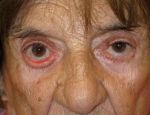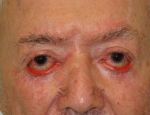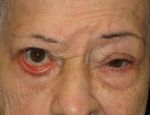Understanding Eyelid Tumors
Eyelid tumors, also known as eyelid lesions, are abnormal growths that can develop on the eyelids. While many eyelid tumors are benign (non-cancerous), some can be malignant (cancerous). Early detection and treatment are essential for optimal outcomes.
Symptoms of Eyelid Tumors
Eyelid tumors can present various symptoms, including:
- A visible lump or bump on the eyelid
- Redness or swelling of the eyelid
- Itching or irritation
- Crusting or bleeding
- Changes in vision
Common Causes of Eyelid Tumors
Several factors can contribute to the development of eyelid tumors:
- Sun exposure: Ultraviolet radiation from the sun is a significant risk factor for eyelid tumors.
- Age: The risk of developing eyelid tumors increases with age.
- Skin type: Fair-skinned individuals are at a higher risk.
- Previous skin cancers: A history of skin cancer increases the likelihood of developing eyelid tumors.
- Certain genetic conditions
Diagnosis of Eyelid Tumors in Miami
Dr. Tanenbaum will conduct a comprehensive eye examination, including a careful inspection of the eyelids. To confirm the diagnosis, he may recommend a biopsy, where a small sample of the tumor is removed and examined under a microscope.
Treatment of Eyelid Tumors in Miami
Dr. Tanenbaum recognizes that every patient and every tumor is unique. That’s why he offers a range of treatment options and tailors his approach to suit your individual needs and the specific characteristics of your eyelid tumor.
Here are some of the common procedures he utilizes:
Surgical Excision
This is often the primary treatment for eyelid tumors. Dr. Tanenbaum is highly skilled in surgical techniques that meticulously remove the tumor while prioritizing the preservation of your eyelid’s natural function and appearance. He takes great care to minimize scarring, ensuring the best possible cosmetic outcome.
Mohs Micrographic Surgery
This specialized procedure is considered the gold standard for certain types of skin cancers, particularly those that are aggressive or recurrent. It involves the precise removal of the tumor layer by layer, with each layer examined under a microscope in real-time. This meticulous approach allows Dr. Tanenbaum to ensure complete removal of all cancerous cells while preserving as much healthy tissue as possible.
Cryotherapy
This non-surgical option utilizes liquid nitrogen to freeze and destroy abnormal cells. It’s often suitable for smaller, superficial tumors and may be recommended for patients who are not ideal candidates for surgery.
Radiation Therapy
In select cases, radiation therapy may be employed to target and eliminate cancer cells. This is typically reserved for tumors that are difficult to remove surgically or for patients who are unable to undergo surgery.
Dr. Tanenbaum will carefully evaluate your condition and discuss the most appropriate treatment options with you. He’ll explain the benefits and potential risks of each procedure, empowering you to make informed decisions about your care.
Recovery Time
Recovery time varies depending on the type of tumor and treatment used. Dr. Tanenbaum will provide detailed post-procedure instructions to ensure optimal healing and minimize complications.
Prevention of Eyelid Tumors
While not all eyelid tumors can be prevented, the following measures can reduce your risk:
- Protect your eyes from the sun: Wear sunglasses that block 100% of UV rays and a wide-brimmed hat when outdoors.
- Avoid tanning beds: Tanning beds emit harmful UV radiation that can increase your risk of eyelid tumors.
- Schedule regular eye exams: Early detection is key to successful treatment.
See the Difference
Schedule a Consultation
If you are concerned about an eyelid tumor or have any other eye-related concerns, contact Dr. Myron Tanenbaum in Miami today to schedule a consultation. Dr. Tanenbaum is a highly experienced ophthalmologist specializing in eyelid surgery and reconstruction. He is committed to providing personalized care and achieving the best possible outcomes for his patients.
Call us today to schedule your appointment and take the first step towards optimal eye health.



